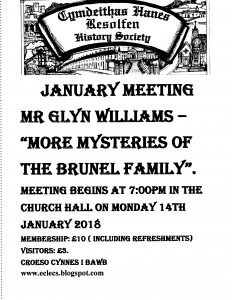Greetings from RDN

IMAGE MIKE DAVIES
Boxing Day Hunt
As always, a good turnout to see the Banwen Miners’ Boxing Day Meet in Neath
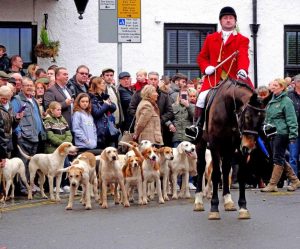
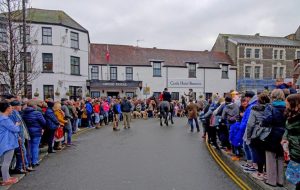


images and video by RDN photographer Mike Davies
youtube link
Santa Seen in Resolven

Santa was spotted by our RDN phographer Mike Davies, as he dashed round the corner by the Farmers Arms, even bringing his own snow with him. He told Mike he was doing a practice solo run (without the other reindeer) to make sure everything goes smoothly on Christmas Eve.
Good luck Santa and Merry Christmas!
Santa Feeds the Birds
Feed the birds, tuppence a bag! Santa is on his way and our RDN photographer Mike Davies was lucky enough to bump into him and capture this lovely picture for us.

Hope you managed to let Santa know what you want for Christmas, Mike!
Report on the December meeting of Resolfen History Society.
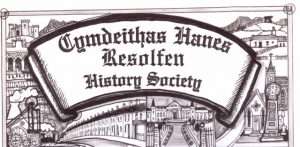 A Report on the December meeting of Resolfen History Society.
A Report on the December meeting of Resolfen History Society.
Some years ago the committee of the History Society decided to make the December meeting a Members’ Night. The idea was not to deter other interested parties attending, but rather a reaction to the fact that competing events tended to diminish the size of the audience. Therefore, members were given the chance to show their local knowledge or give an item on anything they fancied.
The meeting began with a power-point presentation given by the Chairman Gwyn Thomas. Gwyn has amassed a large collection of photos regarding the activities of the Society in recent years. None of the slides was given a title, instead the members had to guess which activity was taking place. Without going in to detail some of the memories were a little rusty, but the exercise at least let people speak about their experiences once dredged from memory.
The second item was a reading from the autobiography of Joe Cookson who worked in a coal level above Melincwrt in 1919. The extract related to his first day in the mine and gave a vivid description of the poor working conditions devoid of any notion of Health and Safety legislation. The most interesting aspect of the work was its use of technical terms while describing the journey to work and the work practices of a boy assigned to a collier. Decades ago, terms such as “haulier”, “gob”, “journey”, “mandril” or “dram”, would not have needed an explanation to a Resolven audience,but times have changed. Luckily, enough of the audience had experience underground to enrich the narrative with details and subsequent anecdotes. Poor Joe, spent the end of his first day in a state of unconsciousness owing to succumbing to a bout of the Spanish flu, which incidentally claimed as many lives globally as the number of casualties in the Great War.
The evening finished with the annual quiz. Quiz being a very loose description, since it involved a competition to win Christmas crackers should three history questions be answered in succession by the same person. The accuracy of the answers was a little varied, since the members also helped themselves to refreshments and of course mulled wine to charge the brain cells. The Quizmaster had to resort to some very generous clues in order to get some reaction from the audience.
Merry Christmas, and a happy new year, from the History Society.
Nadolig Llawen a blwyddyn newydd dda o’r Gymdeithas Hanes.
Trefor Jones.
In Memory of a Loved One
As Christmas draws closer we offer a chance to remember loved ones whom we see no longer, with carols, the lighting of candles and a space for Reflection. There will also be an opportunity afterwards to share a cup of tea or coffee.
Resolven Church Hall
6.30pm—7.30pm
Tuesday 11th December.
Resolven Community Library Update
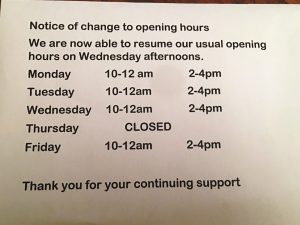
Our last open day before Christmas will be Wednesday the 19th of December, and we will re-open on the 7th of January 2018.
Merry Christmas and a Happy New Year to all our customers
From the Volunteers and Trustees of the Library
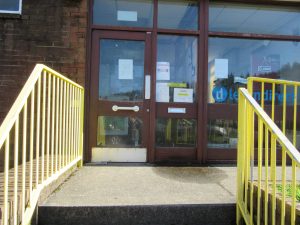
Storm Diana Hits Aberavon and Porthcawl
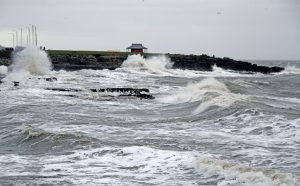
Porthcawl
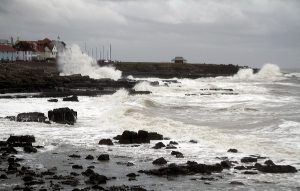
Porthcawl

Porthcawl

Aberavavon
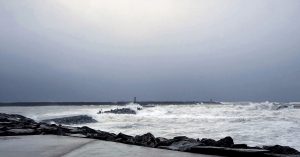
Aberavon
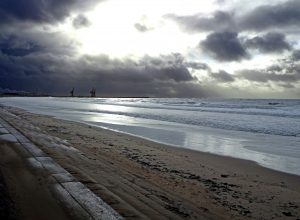
Aberavon
PHOTOS BY MIKE DAVIES
PACT MEETING
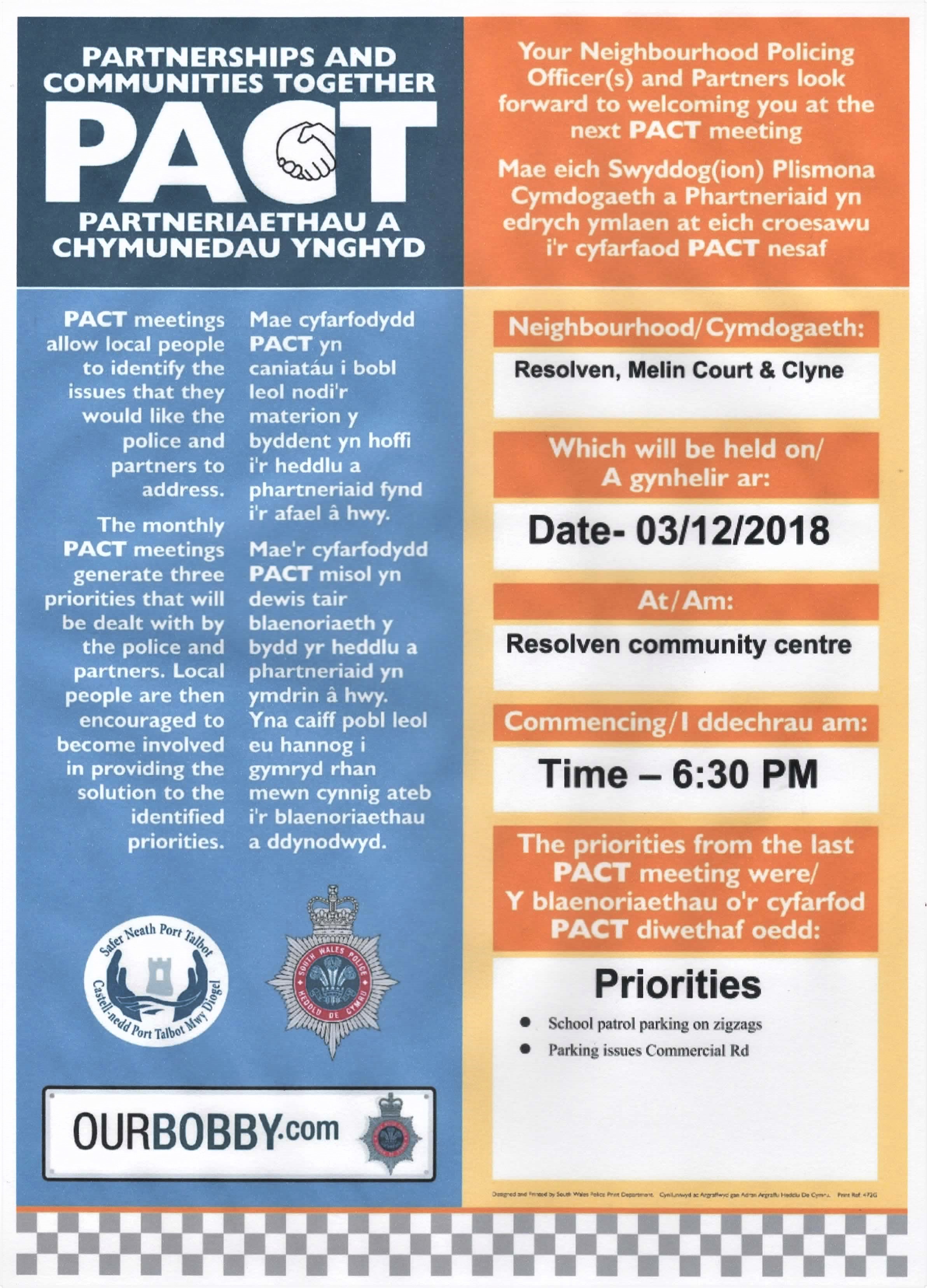
Congratulations on a Celebration
Congratulations on a Celebration

On November 2018, it was the celebration of the 40th Birthday of BBC Radio Wales, National English Language Radio Station, when our RDN Editor was the first presenter’s voice to be heard that morning as she made the announcement of –
“It is half past six on Monday November 13th and this is Anita Morgan saying Welcome to Radio Wales”.

Anita photographed on her first day as a BBC Radio Wales Presenter

Poster in the foyer of Broadcasting House, Cardiff
A memory of that first live broadcast, as told to us by Anita is as follows.
One of the guests that morning was ‘Paul’ the parrot (and his owner) who was supposedly one of the best talking parrots in Wales.
Unfortunately, on that particular occasion ‘Paul’ decided to remain silent.
So Anita said to the Parrot’s owner “What really sets him off”.
The owner replied “Frank Sinatra’s Strangers in the Night”, which he started to sing, and asked Anita to join him, to encourage ‘Paul’ but alas it was to no avail. ‘Paul’ must have been ‘shy’ to perform on air, as he only managed what can only be described as a funny squawking sound which gave way to amusement and laughter in the studio, for the listeners and an unforgettable moment for Anita.

Anita with ‘Paul’ the Parrot and owner during the LIVE Broadcast

‘Paul’ the Parrot
We are pleased and proud to congratulate Anita who is well known in the village and a pillar of our community.
As our Editor, she has worked tirelessly, using her expertise with determination and hard work, giving the village of Resolven an information platform that is available globally, being easily accessed on the technological screens of today.
Resolven District News is a local public resource that is quite unique (with all articles of the RDN recognised and recorded by the National Library of Wales and Great Britain, for future generations).
Thank you Anita for making Resolven your home.
~ ~ ~ ~
Lorna & Hugh Lewis
Second Volume of Resolven History Book Launched
SECOND VOLUME OF RESOLVEN HISTORY BOOK LAUNCHED
Following on from his well-received photo-book ‘RESOLVEN THEN AND NOW’ last year, Resolven author William Willis has just published a second volume in this series. ‘RESOLVEN THEN AND NOW – VOLUME 2’, is on sale from early November 2018. The author has catalogued another selection of rare and largely unpublished photographs of Resolven and District from 1879 to the present day. As ever, it is the author’s intention to portray village life through the ages – whether domestic, social, rural or industrial – using black and white images accompanied by well-researched captions and potted histories of the subjects.
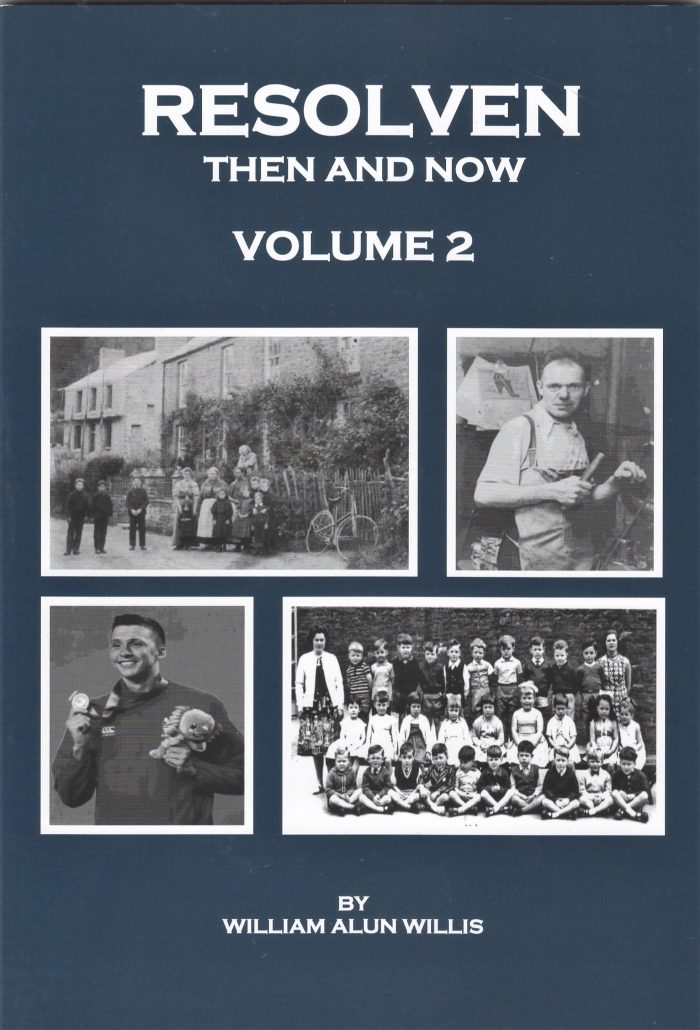
‘RESOLVEN THEN AND NOW – VOLUME 2′{Front Cover}
‘RESOLVEN THEN AND NOW- VOLUME 2’ has 18 chapters covering a new range of subjects such as historical village views, craftspeople and characters, Resolven Carnival, sports, entertainment, old inns and farmsteads. There are also dedicated chapters about Resolven’s lost buildings, Rheola House and Rheola Aluminium works, plus an interesting final chapter illustrating and describing Resolven’s Grade II listed structures.
The book is presented in paperback with a glossy cover. It has 100 pages, containing nearly 200 black and white photographs. The full colour inside covers portray the work of local artists, whilst the full colour back cover has an iconic photograph of Melincourt Waterfall in its full glory.
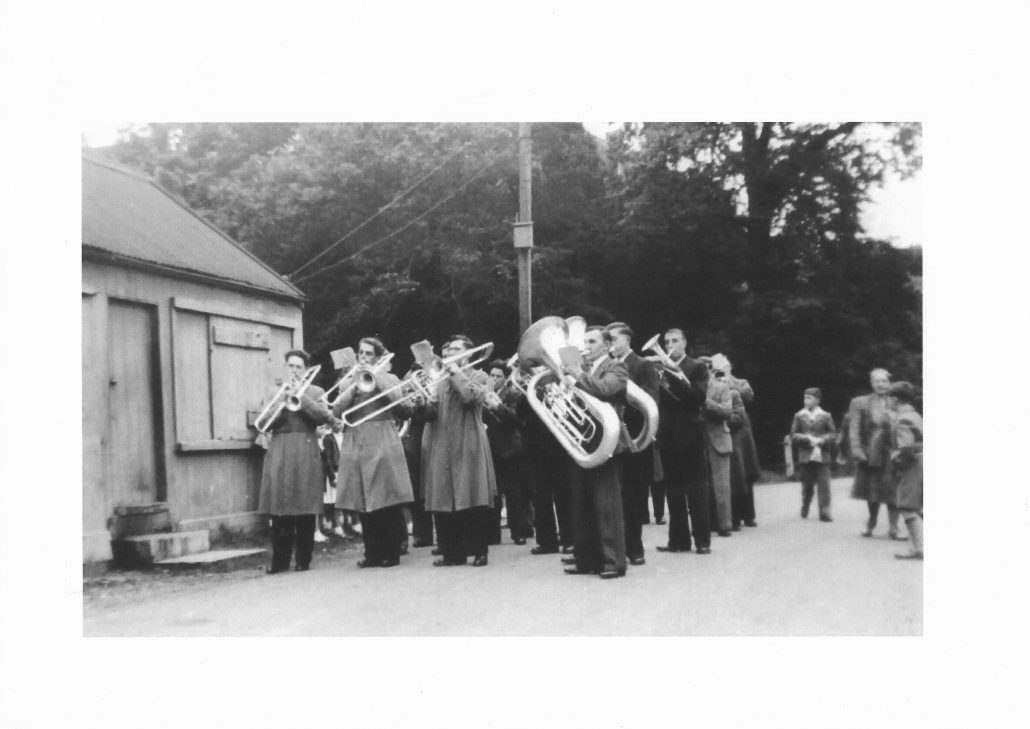
P.32 Resolven Silver Band at the Band Room, 1950
{Photograph courtesy of Brynmor Morgan}
William spent approximately six months gathering and taking photographs and compiling the annotated histories of the subjects. This could not have been achieved without the unwavering support and assistance of the people of Resolven, to whom the author acknowledges a great debt. Once again, it was demonstrated how strongly the community feels about its past and its present, and how this sense of belonging impacts on its future.
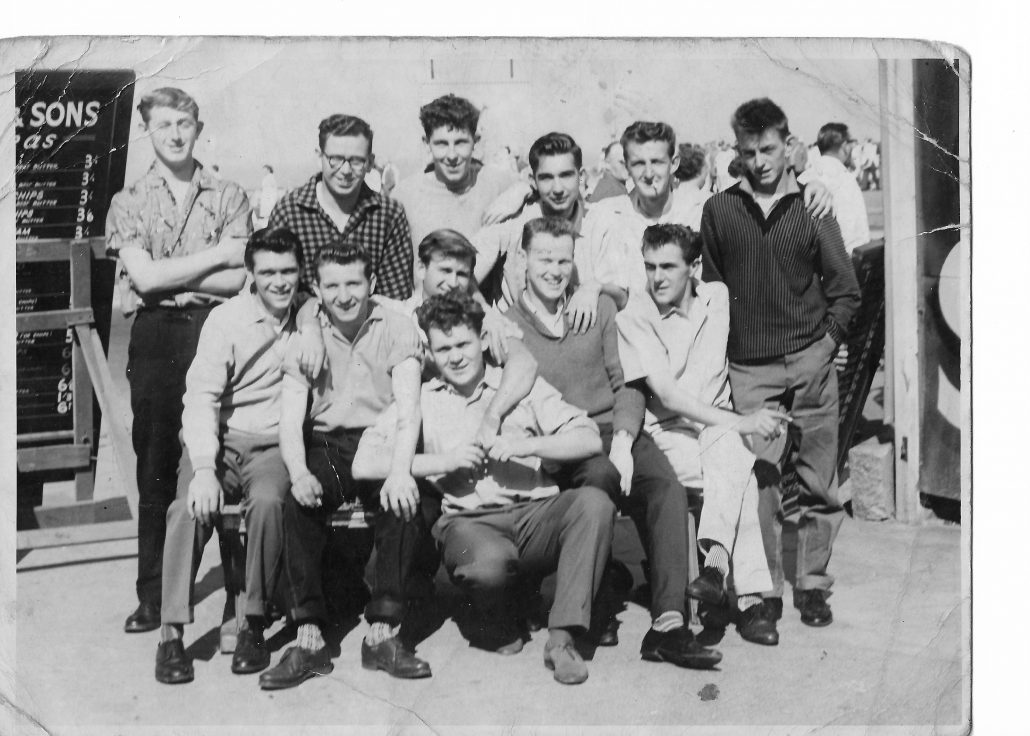
p.81 Resolven Boys’ Blackpool Trip, 1961
{Photograph courtesy of Brian Pritchard}
Such has been the cumulative effect of photograph-gathering, that the author plans to publish a third [and final] volume of ‘RESOLVEN THEN AND NOW’ in the Autumn of 2019. New subjects will include traditional shops and ‘front-room’ shops, cottage industries, old pastimes, Resolven children at play throughout the ages, military matters, local artists and vintage transport. Anyone wishing to contribute is asked to contact the author via the address contained in the book.
‘RESOLVEN THEN AND NOW – VOLUME 2’ may be purchased directly from the author, or from Marcia’s Shop [Resolven Post Office]. The retail price is £10.00 per copy. There is only a limited number, so buy your copy now!!
~ ~ ~ ~
About William
William Alun Willis was born in Resolven. His parents, Joan and Vic Willis, ran the village Post Office for more than 40 years. His mother, Joan, was a serving Justice of the Peace for more than 20 years. William attended Ynysfach Primary School, Resolven (see photo below).
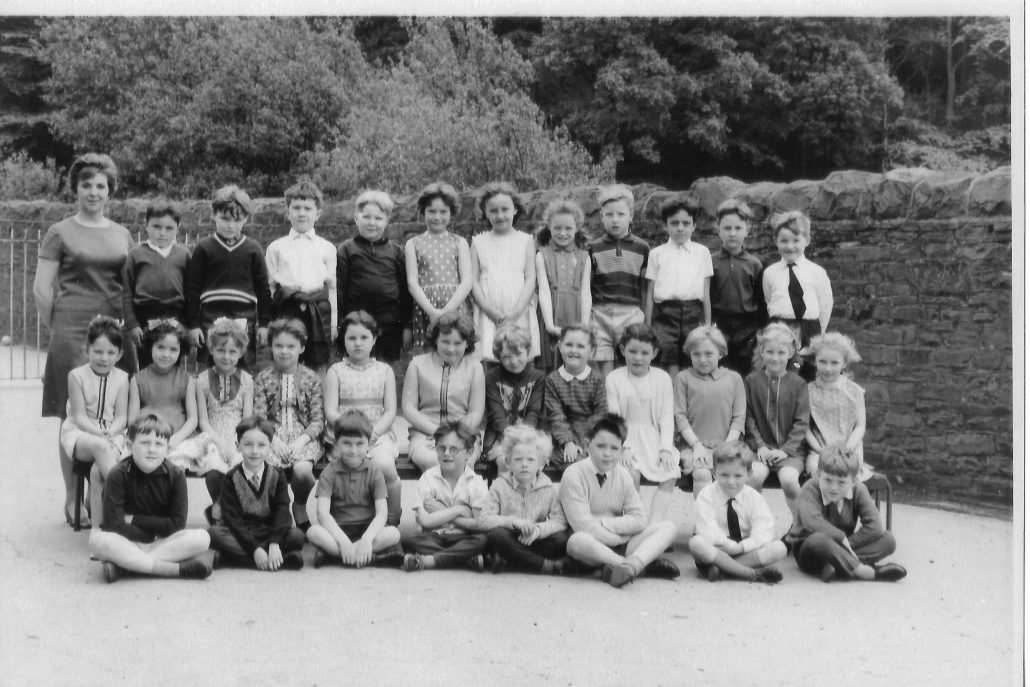
Ynysfach School pupils, 1969
William is the 4th pupil from left in the back row
He started writing comedy scripts with his close friends Eurfyl Davies and Geraint Evans whilst studying for ‘A’ Levels at Dwr-y-felin VI Form College, Neath. Publishers W.H. Allen took an interest, and encouraged the author to try to write professionally.
William attended the University of Wales at Swansea, gaining a combined honours degree in Social History, Sociology and Social Anthropology. However, much of his ‘studying time’ was spent writing and editing the University ‘Rag Mag’ – a charity publication. William was also editor of ‘The Beck Mail’, a residential hall newspaper.
In 1984, William gained his post-graduate qualification in Social Work Studies (specialising in Childhood and Adolescent Behaviour) at Southampton University, before returning to Swansea University to take up the post of Press Officer.
He worked in the training department at Milland Road (under the auspices of Neath Borough Council) for more than twenty years, specialising in special needs teaching and, later, key skills training. He became Training Officer for Neath Borough Council at Milland Road in 1988.
Between 1990-91 William took a gap year, first back-packing around Egypt, Libya and the Sudan; then accepting a year’s TEFL contract at the English Education Centre in Jakarta, Indonesia, where he taught English to professional groups such as doctors, architects and businessmen.
William returned to work for Neath Borough Council in 1991, where he met his partner, Joanna, in 1994. They have been together for 23 years, and have two wonderful children.
In 2001 he decided to re-train as a Law Costs Draftsman [legal accountant], from which job he recently withdrew to take up professional writing again.

Also in 2001, he began writing for radio and television and he entered a competition run by the BBC – ‘The Celtic Nations Comedy Cup’ – which was aimed at developing new comedy writers in Wales, Scotland and Northern Ireland. William was fortunate to be chosen as one of the winning Welsh entries, with a prize of his winning comedy play being staged at the West End in Glasgow. As a result of this, William was given a commission to write a comedy series for the BBC.
In 2002, the comedy series ‘Do It Yourself’ was completed, which followed the exploits of the staff at Dragon DIY and Pet Store. All six episodes of this first series were recorded before a live audience at Resolven Miners’ Welfare Hall in February 2003. The series was directed by ‘Only Fools and Horses’ director Gareth Gwenlan, produced by Darren Broome, and featured an all-star cast from Welsh comedy television and radio. The show was a resounding success, and over the next 5 years another four series (24 episodes) of ‘Do It Yourself’ were commissioned from William, and were recorded before live audiences in a range of local theatres, such as the Coliseum in Aberdare and in the Cwmaman Institute.
In 2007, William wrote another series for the BBC – ‘The Harder They Fall’ – a six-part comedy which followed the trials and tribulations of a compensation law firm. Gareth Gwenlan directed, and Paul Forde produced the series. The cast included veteran actress Margaret John (‘High Hopes’), Brian Hibbard (‘Twin Town’ and ‘The Flying Pickets’), and Richard Mitchley (‘Blackadder’ and ‘Dr Who’). This time, the complete series was recorded before a live audience at the BBC studios in Cardiff.
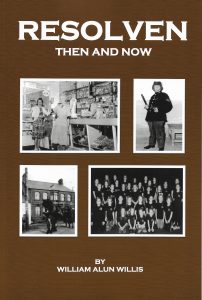
The First Volume of
‘RESOLVEN THEN AND NOW’
William returned to professional writing in 2017 after taking time out to be with his two young children.
.
.
Limited numbers of copies of ‘RESOLVEN THEN AND NOW’ Volume 1 are still available directly from the author or by request from Marcia’s (Resolven Post Office). The retail price is £8.95 (softback; 88 pages of black and white photographs plus full colour covers).
.
.
Among other local history projects, he is currently working on a comedy series for television.
~ ~ ~ ~
Resolven District News wishes William all the very best for his future projects.
~ ~ ~ ~
HL {RDN Team}
Resolfen History Society December Meeting

Note that even though it is a Members Night it is not exclusive to members, just that they will be taking part. Everyone is welcome – mince pies, mulled wine and a historical quiz to finish.

